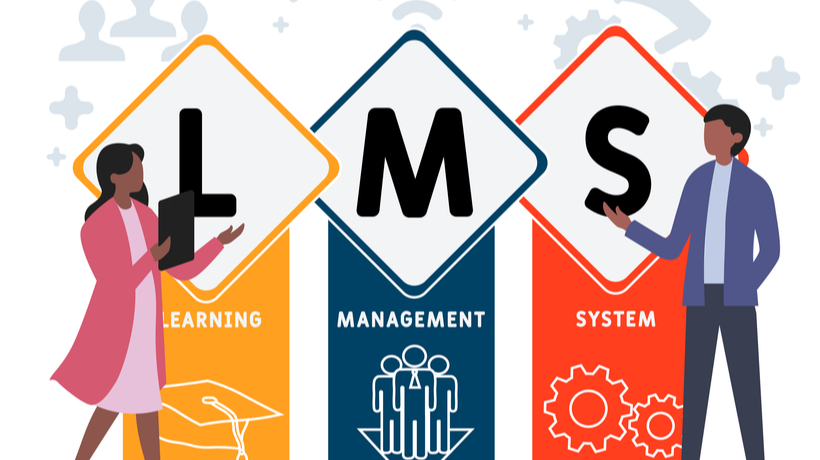An Integrated Approach For SaaS Education
If, like me, you are an Instructional Designer, technical writer, or a digital marketer working in a software company, then you must be wondering how you can succeed in world that is changing faster than any of us can individually cope. The article explores how we can all come together and help our organizations ride this change and deliver value to customers.

The Hard Truth Of The Software As A Service (SaaS) World
Let's acknowledge an absolute truth that exists in the technology industry today. Steve Jobs aptly summarized in his legendary quote: "A small team of A+ players can run circles around a giant team of B and C players."

https://twitter.com/BaileyParnell/status/859925094331809793
Look at this in the context of some companies like Slack, App Dynamics, and Service Now who are competing and dethroning businesses that had been leading those industries for the past decade.
I think the companies that are going to win in such a climate are either small businesses with a group of A+ players or large firms that have multiple business units operating with a startup mentality.
Let's acknowledge a second absolute truth. If you want to sell software to customers, then in most cases they would prefer to buy it as a Software as a Service (SaaS) offering.
As an Instructional Designer, digital marketer, or technical writer, why should you care about it? We all need to wake up and smell the coffee because these two truths are going to change our world dramatically. You need to figure out how you can be an A+ player in your SaaS-driven organization.
Exploring The Shift From On-Premise To SaaS Products
In a large enterprise organization, where an on-premise product is released every six months, various roles are well defined. Marketing is a pre-sales activity, while training and technical documentation were post-sales deliverables. A marketing person's job is to build collateral, run campaigns, and help manage the brand recall and brand permission. An Instructional Designer creates training, which is sold to customers after they've purchased the product. A technical writer creates documentation that is consumed by customers on an ongoing basis.
The roles and definitions blend into each other when it comes to a customer's experience with SaaS products. Customers want to try a product before they buy it. Hence, they start encountering marketing, education, and technical information even before they purchase the product and the quality of these encounters can act as a serious competitive differentiation.
I would wager that a small startup would not even have the budget for three people for these activities and would look for a single individual to do this role.
Whether it be a large enterprise or small startup, we can only evolve if we know each other's role. Let's focus on the most significant stakeholder -the customer- and their experience with a SaaS product.

The Single Biggest Lesson In SaaS
The most important thing we need to understand when it comes to SaaS is that the purchasing power has shifted from the CTO and IT leaders to individual developers. In most cases, developers and users within the organization see a business problem. They start researching for solutions. They try the solution for a few days and find one that fits their need. After that, they ask their manager to approve a small paid engagement to use more features of the product. Gradually, the word spreads till the product starts getting enterprise-wide credibility.

Since developers and real users now have purchasing power, we need to start actively engaging with them. Hence, we are moving from a business-to-business engagement to business-to-customer engagement.
To learn how we can do this effectively, digital marketers took inspiration from people who have done this successfully for decades namely FMCG companies like Proctor and Gamble (P&G).
Understanding The Marketing Model For SaaS

http://www.whatisinboundmarketing.co.uk/what-is-inbound-marketing
In 2005, P&G developed the 3-Step Marketing Model. They believed a customer would need a stimulus such as an advertisement or a conversation with a friend to pique their interest in a product. Then they would encounter the First Moment of Truth (FMOT) where they go to a store and see multiple options on a shelf all vying for a customer's interest. P&G knew that their product had to grab the customer's attention. The Second Moment of Truth (SMOT) is when the customers purchase the product and start using it? Does the product live up to their expectations?

http://www.whatisinboundmarketing.co.uk/what-is-inbound-marketing/
In 2011, Google added one more step to this model and called it Zero Moment of Truth (ZMOT). They said that due the proliferation of digital tools, there is a significant moment between the stimulus and FMOT when the customer is researching for reviews, features, feedback, and is open to suggestions on multiple products that can solve his problem. That is the time where you want to influence the customer to try and use your product.
Let's transpose this context to a software company. Imagine that you work in a software company that sells SaaS-based Infrastructure Monitoring (IM) solution. So, when an Infrastructure administrator is struggling to monitor his hardware and cloud infrastructure and wants to find a software solution, what do they do? They start researching about how they can solve this problem and how other companies monitor infrastructure. This research process is the administrator's ZMOT. They want to address an issue and are actively looking for a solution. If your organization's digital marketing and social media team have done their job well, the administrator will encounter the product in their research and may want to try it.
Let's review how you can use the marketing funnel to help turn such a customer from a passive explorer to an advocacy champion by looking at the marketing funnel.
Exploring The Marketing Funnel And What It Means To Education

http://saurabhchoudhary.com/wp-content/uploads/race-digital-strategy-funnel-infographic1.jpg
Customer Phase – Exploration
In our fictitious scenario, the customer is looking for a SaaS-based IM solution and is in the Exploration phase. Your digital marketing team would already have created a few landing pages, short videos, customer case studies, and micro-sites explaining the value of the product and highlighting its benefits.
Principal Responsibility of Instructional Designers/Technical Writers: Be aware of such videos and microsites and review the content covered there. When the customer wants to learn more about the product, the content covered here is knowledge they may already possess when they come over to you.
Principal Responsibility of Digital Marketers: Try and leverage the Instructional Designers and technical writers in-house to create some of the videos and content. Marketing teams have a reasonable budget and tend to use it to find vendors who specialize in creating animation videos. Tools such as GoAnimate allow in-house teams to build high-quality animations that can be used to market the product effectively.
Game Changing Value from Instructional Designer/Technical Writer: Always remember that the customer does not love buying a product and is only looking to solve their business problem. Hence, the best way to win the confidence of such customers is to demonstrate that you understand the problem they are trying to solve. You can do that by creating an MOOC-style course which is freely available to all customers and can be marketed heavily by the digital marketing team. In our fictitious scenario, the 3-5-hour course can have experts from your company talk about the challenges and best practices for infrastructure management from an industry perspective. What are the key metrics that you need to consider? What kind of metrics matter for what kind of environment? What are some best practices for alerts, alarms, and reports?
All this content is generic information that administrators would love to learn. At the end of this course, you can have a quiz and give people a participation certificate. Also, include a demonstration of how your product can do all this and more. As a Learning and Development professional, if you are using an LMS like Docebo, such MOOC-style courses are provided out-of-the-box. If you don't use such Learning Management Systems, you can set up a good WordPress website and use a WordPress-supported LMS such as LearnDash, Sensei, or LearnPress. You need to ensure that you integrate your registration process with your organization's marketing tool such as Marketo or HubSpot so that the learners are automatically added to the relevant marketing campaigns.

https://open.sap.com/courses
OpenSAP is an offering from SAP where they teach industry best practices and link it to their technology seamlessly.
Additional Value Provided by Digital Marketers: You can include snippets of videos created for such courses in your marketing campaign to attract users to your product.
Customer Phase - Decision Making

In our fictitious scenario, the customer is looking for a SaaS-based IM solution and now wants to try the product. Since all SaaS products use the try-before-you-buy model, they can use any of the call-to-actions provided in the exploration phase to sign-up for a free trial of the product.
Principal Responsibility of Instructional Designers/Technical Writers: When a customer is experiencing a SaaS product, you want to provide them two kinds of information. First, you want to ensure they are comfortable using your product and the UI. Digital Adoption platforms such as Walk Me do a great job of adding a layer on top of your product. Customers can practice some key steps and tasks they need to perform on the product.

https://www.walkme.com
However, many customers explore products to see what are the different ways in which they can use your product and want to learn more about its architecture and key components. In such cases, you can build interactive onboarding training material, which can reside within your SaaS product. This training includes videos that introduce the product, its architecture, the various deployment options, and some key features.
You can also include lab exercises to help customers experience the power of your product. In our fictitious scenario, the lab exercises should allow students to connect to cloud infrastructure and monitor it, simulate errors, create reports, and build dashboards. This training is beneficial for users who don't want to explore their IT environment to the SaaS product initially.

If there are features in the SaaS product that are not available in the free version, ensure that you have demonstrations that showcase those features and have CTAs to help customers upgrade to premium plans.
Additional Value Provided by Instructional Designers/Technical Writers: You should create the training by using tools that allow you to integrate into the SaaS environment. It's crucial that customers should not exit the SaaS environment to consume training. One of the easiest ways to achieve this objective is to author the training in Articulate Rise and publish it as a web package. Your SaaS team can place the package in a container in the SaaS environment. The product team can also link this training to the relevant sections such on the help bar or as breadcrumb in the UI.
Another thing you can do is integrate your training with the chat option that is available in most SaaS products. Most companies use products like Intercom to enable this chat facility, and you can embed the Intercom code in your training to ensure the chat UI is available in your training. Customers can use this option to contact support and troubleshoot issues.

Additional Value Provided by Digital Marketers: Ensure that you give links to this training in your email communication with customers.
Customer Phase – Purchase

In our fictitious scenario, a customer was looking for a SaaS-based IM solution and loved what they saw in the trial stage. They have now bought a license and are actively using it.
Principal Responsibility of Instructional Designers/Technical Writers: The customer has purchased the product and now expect more value from their money.If you have used a digital adoption platform like WalkMe, you can customize it to show additional tasks that are only visible to paid users. Some examples include additional features that they can use or integrations with other products.
Additional Value Provided by Instructional Designers/Technical Writers: Work with the development and product management teams to see how customers can stretch your products to achieve maximum value. A few typical examples are integration with third-party or open source products. Create some high-quality demonstrations videos for the same and feed them to the digital marketing team.
Additional Value Provided by Digital Marketers: Ensure that you include advanced videos and assets created by the training team in marketing campaigns.
Customer Stage: Advocacy

In our fictitious scenario, the customer is delighted to use the SaaS-based IM solution and is getting a lot of value from it.
Principal Responsibility of Instructional Designers/Technical Writers: You can be sure that your digital marketing team is going to approach the customer for some testimonials or videos. User-generated content is gold and customers tend to believe other customers. Work with digital marketing team to curate some videos that you can embed in the onboarding training, which you created for the decision-making phase. Thus, when customers are learning about the product, they can also see how other customers are using the product. This approach allows you to influence their purchase decision.

http://bit.ly/2tJEYIK
Additional Value Provided by Digital Marketers: Review the content for the onboarding training and plan some customer testimonial videos that tie into the content covered there. These videos will ensure you can use the training to market the product subtly.
A Whacky Idea
Customer's love acknowledgment that their contribution matters. When you like, customer contributed content acknowledge that by sending the customer a personalized 3D printable design for a keychain or some other goods. Also, send them a voucher to a service where they can print this as memorabilia. The digital nature of the gift allows them to customize the gift and print it at home or in any facility near their house where you can commercially print 3D designs.

http://bit.ly/2vmGTF9
Final Recommendations For Building SaaS Education
Now that you understand the importance of ZMOT and the Marketing funnel let's review recommendations for building education for SaaS products.
- The Product Owners need to ensure that the digital marketing, education, and technical writing teams are collaborating continuously.
- Assign dedicated experts to create videos for the product and reuse it across different communication channels with customers.
- Focus on generating and using customer-contributed content wherever possible.
All the best in your SaaS and content journey.









